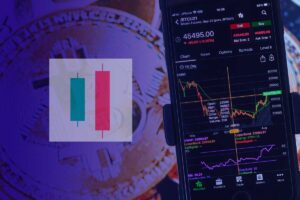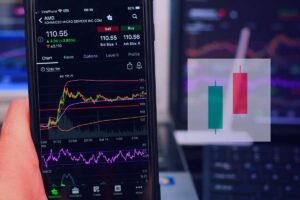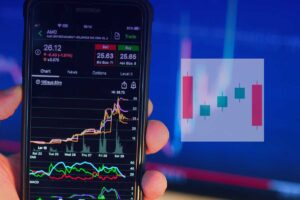The South Sea Bubble, which occurred in the early 18th century in England, was one of the most infamous financial bubbles in history. It was associated with the speculative frenzy surrounding the shares of the South Sea Company, a joint-stock company established in 1711.
South Sea Bubble of 1720
The South Sea Bubble of 1720 was a speculative financial bubble that occurred in Great Britain during the early 18th century. It was named after the South Sea Company, a joint-stock company that played a central role in the events leading up to the bubble.
The South Sea Company’s shares were initially viewed as a safe investment, backed by the government and promising steady returns. However, speculation surrounding the company’s potential for profit grew rapidly, fueled by rumors of vast wealth to be gained from trade with Spanish America.
The speculative frenzy reached its peak in early 1720, with the South Sea Company’s stock price soaring to unprecedented levels. Investors from all walks of life, including nobles, merchants, and commoners, eagerly invested their savings in the hope of quick riches.
In mid-1720, the bubble burst as investor confidence evaporated, and panic selling ensued. The South Sea Company’s stock price plummeted, wiping out fortunes and leading to financial ruin for many investors.
The South Sea Company’s shares were trading around 126 at the beginning of January 1720. Then the boom started, and the stock reached its peak of 950 in July. The bubble did not last long, only to fall back to 160 in November.
Background
The early 18th century was marked by intense rivalries between European powers, including England, Spain, and France. These rivalries often played out in the form of colonial expansion and trade competition, particularly in the lucrative markets of the Americas and the Pacific.
The War of the Spanish Succession (1701-1714) was a major conflict that engulfed Europe as rival claimants vied for control of the Spanish throne. England, under Queen Anne’s reign, played a significant role in this war, seeking to prevent the unification of the Spanish and French crowns, which could have upset the balance of power in Europe.
Government Debt
England in 1711 was burdened by significant government debt, largely accumulated from the costs of waging wars, including the War of the Spanish Succession. Financing military campaigns, maintaining armed forces, and supporting allied nations had strained the nation’s finances.
To address the challenges posed by mounting debt, the British government explored various strategies, including debt conversion schemes, lotteries, and other financial innovations. The proposal to convert government debt into shares of the South Sea Company was one such strategy aimed at reducing the burden of interest payments and attracting capital from investors.
The South Sea Company
The South Sea Company was proposed in 1711 by a group of British merchants and financiers seeking to capitalize on the opportunities presented by trade with Spanish America and the Pacific. They approached the British government with a proposal for the establishment of a joint-stock company with exclusive trading rights in these regions.
In exchange for assuming a portion of the British national debt and providing loans to the government, the South Sea Company was granted a royal charter by Queen Anne in 1711. This charter conferred upon the company a monopoly on trade with Spanish America, granting it exclusive rights to engage in commerce with the Spanish colonies.
As part of the agreement, the South Sea Company absorbed a portion of the national debt owed by the government. In return, the company issued shares of its own stock to the creditors. These shares represented ownership stakes in the company and entitled the creditors to future dividends and profits generated by the company’s trading ventures.
To incentivize participation, the South Sea Company guaranteed to pay an annual interest rate, or dividend, on these shares. The interest rate was initially set at 6%. In addition to these interest or dividend payments, the creditors also stood to benefit from any appreciation in the value of the South Sea Company’s shares, which could result in capital gains over time.
Treaty of Utrecht & Asiento de Negros
The Treaty of Utrecht, signed in 1713, marked the end of the War of the Spanish Succession. Among its provisions was the granting of certain trading rights to Britain, including the right to engage in limited trade with Spanish America. This treaty provided the foundation for the trading activities of the South Sea Company in the American colonies.
The Asiento de Negros, or simply the Asiento, was a lucrative contract granted by the Spanish Crown to other European countries to supply African slaves to Spanish colonies in the Americas. The contract allowed the holder to transport a specified number of enslaved Africans to Spanish territories over a set period, typically for a fee or a share of the profits from slave sales.
Britain secured the Asiento in 1713 as part of the Treaty of Utrecht. The treaty granted Britain exclusive rights to supply slaves to Spanish America for a period of 30 years.
Acquisition of the Asiento by the South Sea Company
Recognizing the profitability of the Asiento, the South Sea Company negotiated with the British government to acquire the rights to the contract.
In 1713, the South Sea Company successfully secured the Asiento from the British government, becoming the sole entity responsible for supplying African slaves to Spanish colonies in the Americas.
The acquisition of the Asiento was expected to provide the South Sea Company with a lucrative source of revenue and enhance its commercial prospects. By monopolizing the slave trade to Spanish America, the company anticipated gaining a significant advantage in transatlantic commerce.
The King as the Governor of the South Sea Company
In 1718, King George I of Great Britain was appointed as the nominal governor of the South Sea Company. This move was primarily symbolic, and the day-to-day management and operations of the company were overseen by its own directors and officers.
The appointment of King as the nominal governor gave an air of legitimacy and credibility to the company, as this was generally interpreted as a sign of government support for the South Sea Company. Investors were more inclined to believe in the company’s ability to generate profits and deliver returns on their investments. This perception of stability reassured investors and encouraged them to invest larger sums of money in the company’s stock.
In short, these close ties with the government and the monarchy created an environment where the South Sea Company was viewed more favorably by the public, and investors considered it a safer investment option.
Key Events
New Debt Conversion Scheme
In 1719, the South Sea Company began discussions with the British government regarding the possibility of taking over the unconsolidated national debt.
The stock of the South Sea Company was trading around £126 at the beginning of January 1720.
In January 1720, a formal proposal was made to Parliament outlining the plan to take over a large portion of the national debt. The proposal involved issuing shares to the holders of government bonds and securities in exchange for their debt holdings.
While some members of Parliament expressed concerns, others supported the new debt conversion scheme. The South Sea Company argued that the conversion would not only provide relief to the government by lowering its debt burden but also offer investors the opportunity to participate in the company’s potential profits and growth.
The stock of the South Sea Company was trading around £135 at the end of January 1720.
Rising Stock Prices
The South Sea Company’s stock prices began to rise steadily from January 1720.
The new scheme for the conversion of government debt into South Sea Company stock appealed to investors seeking to profit from the company’s expanding influence and potential dividends (interest payments). The allure of lucrative trade opportunities with the Spanish colonies, combined with the promise of government-backed financial instruments, drove up demand for the company’s shares.
The stock of the South Sea Company was trading around £179 at the end of February 1720.
As discussions about the debt conversion scheme gained traction, more investors entered the market in anticipation of further price increases. This speculative buying pressure further fueled the upward movement of the South Sea Company’s stock price.
The stock of the South Sea Company was trading around £220 at the end of March 1720.
Government Debt Swap in April 1720
In April 1720, Parliament approved the South Sea Company’s proposal, granting it the authority to proceed with the debt takeover. The government endorsed the plan, viewing it as a means to address the country’s growing debt crisis and stimulate economic growth.
The debt swap officially began shortly after the approval. Investors exchanged their government debt holdings for shares of the South Sea Company.
Parliament’s approval further endorsed the company’s activities, signaling to the public that the government supported the South Sea Company’s efforts to manage the national debt and stimulate economic growth.
Moreover, the South Sea Company benefited from robust political backing from influential figures within the British government. Notable political figures, such as members of the Cabinet and high-ranking officials, openly endorsed the company. These endorsements enhanced the company’s reputation and standing, instilling confidence among investors. Many perceived investing in the company’s shares as a guaranteed path to wealth.
The stock of the South Sea Company was trading around £328 at the end of April 1720.
Promotional Tactics
The South Sea Company engaged in extensive marketing and promotional activities to hype its stock and create a sense of urgency among investors. This included advertising in newspapers, pamphlets, and public announcements, highlighting the company’s supposed profitability and future prospects.
The company forged partnerships with the government, royalty, and other influential figures in a publicly visible manner. This association with the government helped attract investors who believed in the company’s official endorsements and perceived government backing.
Publicizing Prominent Shareholders: The South Sea Company adopted a strategy of publicizing the names of prominent shareholders, including members of Parliament, King George I, and his family members. By showcasing the participation of prestigious individuals and institutions as shareholders, the company sought to create a perception of legitimacy and endorsement for its operations.
Credit Arrangements: One of its strategies involved the company loaning money to prospective investors to purchase shares in the South Sea Company. It also allowed existing shareholders to borrow against their current stock holdings.
Installment Subscriptions: Throughout the year, the South Sea Company issued installment subscriptions, allowing investors to purchase shares in multiple installments rather than paying the full price upfront.
Public Offering: The company also conducted public offerings of its shares, attracting investors from all walks of life, including wealthy merchants, aristocrats, and members of the burgeoning middle class. The allure of potential profits from trade with the Spanish colonies and the company’s association with royalty was indeed a potent combination for investors, driving up the price of its stock.
The stock of the South Sea Company was trading around £400 at the end of May 1720.
Bubble Act
The Bubble Act of 1720 was a significant piece of legislation enacted by the Parliament of Great Britain in June 1720 to regulate the formation and operation of joint-stock companies, particularly those engaged in speculative ventures and trading schemes.
The Bubble Act required joint-stock companies to obtain a royal charter or parliamentary approval before issuing shares or conducting business. By imposing stricter regulations on the issuance and trading of shares, the Act aimed to prevent the formation of speculative bubbles and fraudulent practices, thereby safeguarding investors and maintaining financial stability.
Though the aim was to regulate joint-stock companies such as the South Sea Company, the company itself favored the Act. Some historians argue that the primary aim of the Bubble Act was to maintain the dominance of existing companies in the financial markets, which is why the company supported it.
Under this interpretation, the Bubble Act served as a form of protectionism, shielding established companies from competition and ensuring their continued access to investors’ capital. By imposing stringent regulations on the formation and operation of joint-stock companies, the Act made it more difficult for new entrants to enter the market and challenge the established players.
In any case, the enactment of the Bubble Act had no adverse impact on investor sentiment, as speculation and stock prices of the South Sea Company continued to soar.
The stock of the South Sea Company was trading around £755 at the end of June 1720.
Irrational Exuberance
People from all walks of life, including those of modest means, joined the speculative frenzy. The belief in the company’s potential for enormous profits created irrational exuberance, leading to a rapid escalation in stock prices.
The government’s endorsement of the South Sea Company’s financial scheme, the company’s monopoly on trade, and its promotional tactics – all contributed to this speculative bubble, later infamously known as the South Sea Bubble. Investors clamored to buy shares of the company in anticipation of future profits, driving up stock prices to unsustainable levels.
The stock of the South Sea Company was trading around £950 as of July 10th.
Bubble Burst
The South Sea Company’s stock price had become vastly overvalued compared to its intrinsic value. Investors had bid up the price of the stock to unsustainable levels, far exceeding the company’s actual assets, earnings, and future prospects. The disconnect between the stock price and its underlying fundamentals created a precarious situation that made a correction inevitable.
The decline in the stock prices of the company began in July 1720. The bubble finally burst in August-September 1720, causing a catastrophic collapse in the value of the company’s shares.
The stock of the South Sea Company experienced a sharp decline, trading around £870 at the end of July 1720, dropping further to £765 by the end of August 1720, and plummeting to just £400 by the end of September 1720.
The burst of the South Sea Bubble resulted in widespread financial losses for investors who had bought into the speculative frenzy. Many individuals, including members of the aristocracy, merchants, and ordinary citizens, saw their investments evaporate as the stock prices of the South Sea Company collapsed.
The bubble burst triggered a wave of bankruptcies and defaults as investors who had borrowed money to invest in the stocks were unable to repay their debts. Financial institutions, including banks and lending houses, faced significant losses as borrowers defaulted on their obligations.
The stock of the South Sea Company dropped below £200 by the 9th of October 1720. Although it briefly rose to around £240 at the end of October 1720, this increase was temporary, and the price fell once more. By the 27th of November, the stock was trading around £160.
The fallout from the burst of the South Sea Bubble had political ramifications, shaking confidence in the government and leading to public outcry and demands for accountability. Many investors who had lost their life savings in the bubble blamed the government, the South Sea Company, and financial elites for their misfortune, leading to resentment and anger among the populace.
The scandal surrounding the bubble tarnished the reputations of politicians, aristocrats, and other prominent figures involved in the affair.
Isaac Newton
Among the notable casualties of the South Sea Bubble, Sir Isaac Newton stood out, having lost a considerable sum of money. Newton had invested a significant sum of money in the South Sea Company, initially profiting handsomely as the stock price soared during the bubble.
However, Newton eventually sold his shares at a substantial profit, only to see the stock price continue to rise even higher. Succumbing to the temptation of further gains, Newton re-entered the market, this time investing an even larger sum.
Unfortunately, Newton’s timing was poor, as the bubble soon burst, and the South Sea Company’s stock price plummeted. Newton suffered heavy losses, reportedly losing the equivalent of millions of dollars in today’s money. He is said to have remarked that he could “calculate the motions of the heavenly bodies, but not the madness of the people.”
Aftermath
The burst of the South Sea Bubble and related scandals had serious political repercussions. Parliamentarians faced scrutiny and criticism for their role in promoting the South Sea Company and failing to prevent the speculative frenzy.
The public alleged fraud, corruption, and insider trading by both company and government officials and called for accountability and reform. These scandals rocked the British financial system and led to a loss of public trust in both the government and financial institutions.
In response to public outcry, Parliament conducted investigations and inquiries into the causes and consequences of the South Sea Bubble. Committees were established to examine the conduct of company officials, stock jobbers, and government officials involved in the affair.
In January 1721, Parliament imposed strict restrictions on the directors of the South Sea Company amidst public anger and demands for accountability. These restrictions prohibited directors from leaving England and serving as directors in other prominent companies, including the Bank of England and the East India Company.
Committee of Secrecy
The Committee of Secrecy, officially known as the Secret Committee of the House of Commons, was established in 1721 in the aftermath of the burst of the South Sea Bubble to investigate the causes and consequences of the financial crisis. It was tasked with conducting a comprehensive inquiry into the actions of the South Sea Company, its officials, and other individuals involved in promoting and profiting from the speculative frenzy.
The Committee of Secrecy conducted a thorough investigation into the causes and consequences of the South Sea Bubble and issued a comprehensive report detailing its findings, conclusions, and recommendations for reform. The report highlighted instances of fraud, corruption, and mismanagement within the South Sea Company and proposed legislative and regulatory changes to prevent similar financial crises in the future.
Act to Restore the Publick Credit
The Act to Restore the Publick Credit, passed in 1721, was a piece of legislation enacted by the British Parliament in response to the financial crisis precipitated by the burst of the South Sea Bubble.
The Act sought to reallocate and redistribute funds from individuals who had profited from the speculative frenzy of the South Sea Bubble to those who had suffered losses. It aimed to provide some measure of restitution to victims of fraud and mismanagement perpetrated by the directors of the South Sea Company and others involved in the scheme.
Many families impacted by the crisis were forced to file for bankruptcy due to their losses in the speculative frenzy. The Act provided assistance and support to these families, offering them a path to financial recovery and stability in the aftermath of the crisis.
Bibliography
- Curiosity Collections by the Harvard Library: https://curiosity.lib.harvard.edu/south-sea-bubble/
- South Sea Bubble 1720 Project by Yale School of Management: https://som.yale.edu/centers/international-center-for-finance/data/historical-financial-research-data/south-seas-bubble-1720
- Frehen, Rik and Goetzmann, William N. and Rouwenhorst, K. Geert, New Evidence on the First Financial Bubble (July 27, 2012). Journal of Financial Economics, Volume 108, Issue 3, June 2013, Pages 585-607, Available at SSRN: https://ssrn.com/abstract=1371007











I don’t know how I ended up here, but I thought this post was excellent. I have no idea who you are, but you will become a well-known blogger very soon if you aren’t already. Salutations.